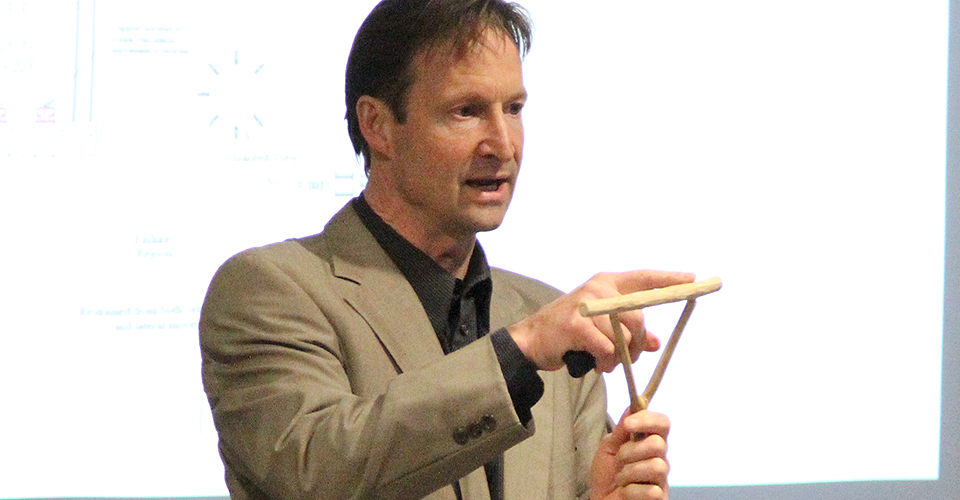

What building material is a self-replicating carbon nano-fiber as strong as steel, sequesters carbon, and cleans the environment while it is being produced? Stumped? Its production also provides habitat to over half of earth’s species and is likely being made in your neighborhood? The answer is wood. [Photo Gallery]
The UW-Stevens Point Division of Interior Architecture welcomed Wisconsin-based architect Roald Gundersen, AIA, of Whole Trees Architecture and Structure, for its Spring Colloquium lecture on Wednesday, April 10. Gundersen shared his unique approach to designing and building with whole trees.
Life Cycle Assessments show wood to be, by all metrics, the greenest material. Long a standard for residential construction, it is now becoming a common structural material for long-span, such as the 100-meter Olympic Oval, The Centre Pompidou Metz, and even high-rise buildings such as The Stadthaus in London. New structural systems like cross-laminated timber panels can score multiple LEED points, cost less, and are faster to build with than steel or concrete. However, small un-milled trees are stronger than milled wood, require less energy to produce, less time to grow, and are far more abundant than millable trees. Designing and building with small trees is a challenge, as our presenter will share, but he believes it is key to healthy and profitable forests. This in turn, offers a significant design consideration when taking into account climate stability.
